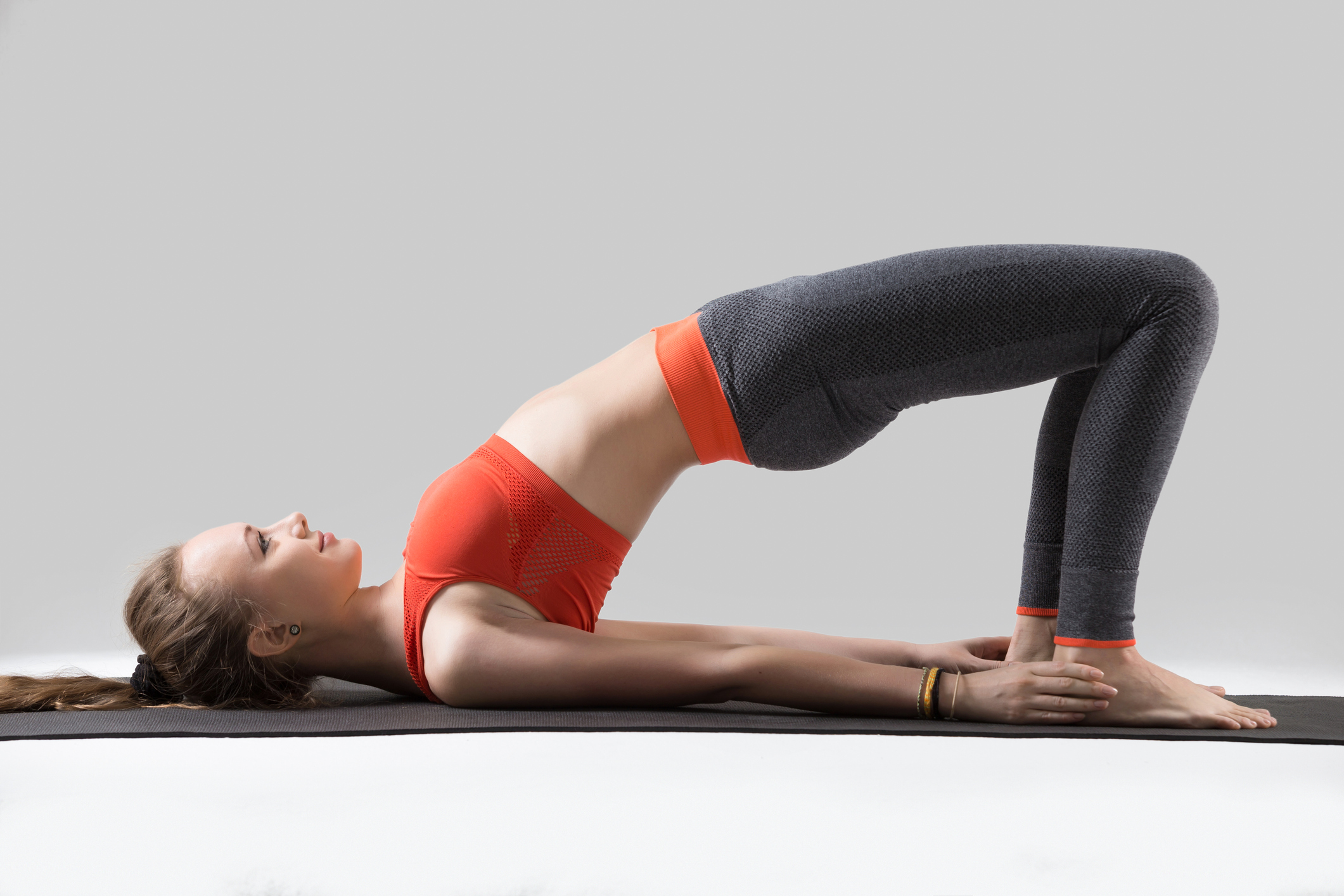BRIDGE POSE
Setu Bandha
(SET-too BAHN-dah)
Setu=dam, dike, or bridge
Bandha=lock
Sarva=all
Anga=limb

Steps
- Lie supine (on your back) on the floor, and if necessary, place a folded blanket under your shoulders to protect you neck.
- Bend your knees and place your feet parallel to each other and hip-width apart. Keep the feet close to the sitting bones.
- Inhale, then exhale and press your feet into the floor, and lift your hips. Lengthen your tailbone and extend from your pelvis out through your knees. Press your palms firmly into your mat, opening up the collar-bone space.
- Lift your chin slightly away from the sternum and, firming the shoulder blades against your back, press the top of the sternum toward the chin. Firm the outer arms, broaden the shoulder blades, and try to lift the space between them at the base of the neck up into the torso.
- Remain in the pose for a few breaths, then begin to release the pose with an exhalation rolling down your upper back, mid-back and lower back placing your sacrum back on the floor and relax your tailbone.
Modifications and Props
If you have difficulties supporting the lift of the pelvis in this pose use a blanket under your shoulders. You could also place a block under the sacrum for support.
Variations:
- Clasp your hands together under your back and roll your right and left shoulders underneath one at a time, drawing your shoulder blades more onto your back
Benefits:
Improves flexibility in the spine and shoulders; Stimulates the nervous system; Aids digestion; Opens the chest, neck, and shoulders; Stimulates the thyroid and parathyroid glands; Increases lung capacity; Relieves menstrual and menopausal discomfort; Relieves high blood pressure, asthma, and sinusitis; Reduces fatigue
Contraindications:
Neck or shoulder injury (use the gentle variation); Wrist injury
